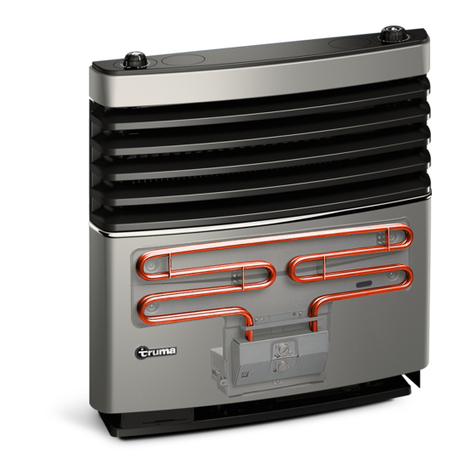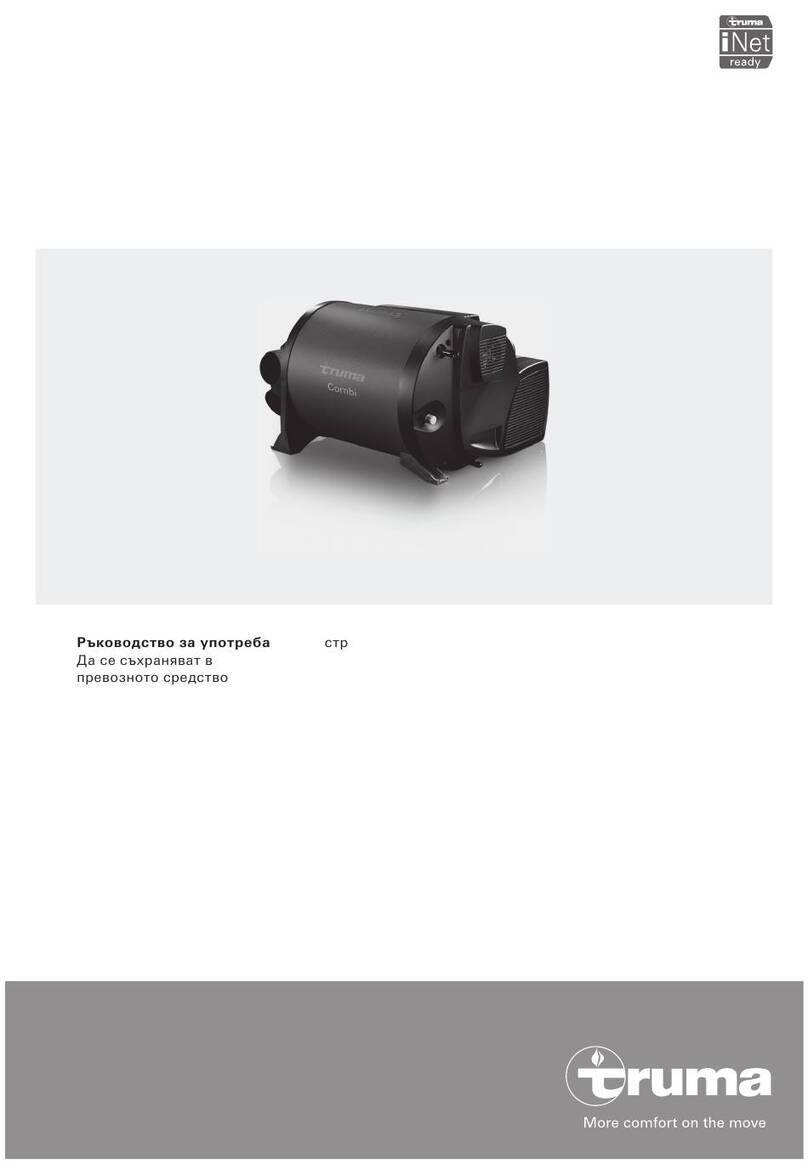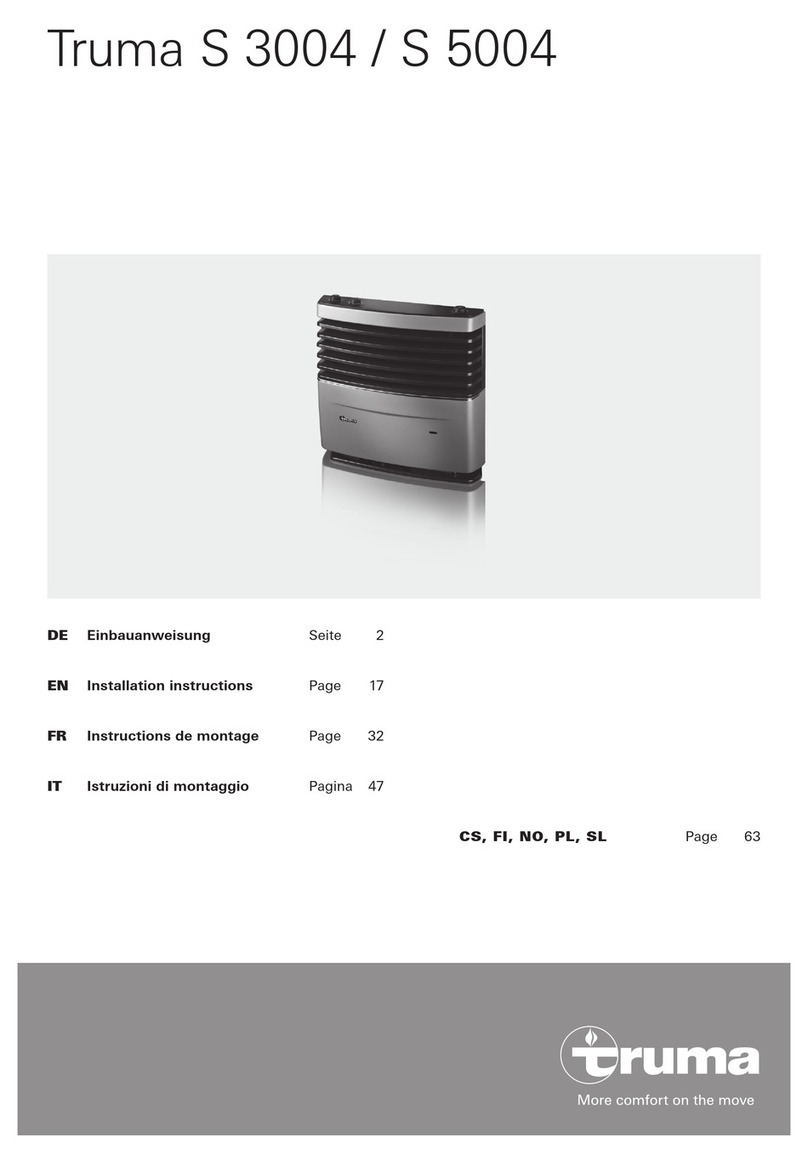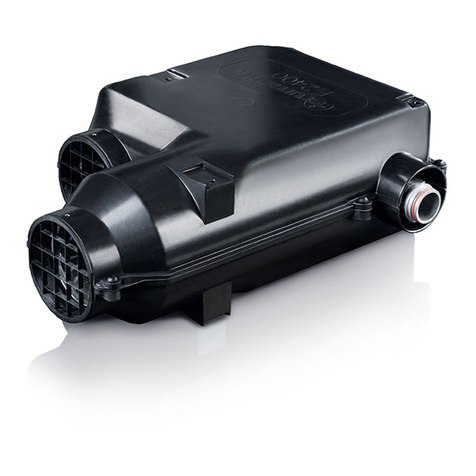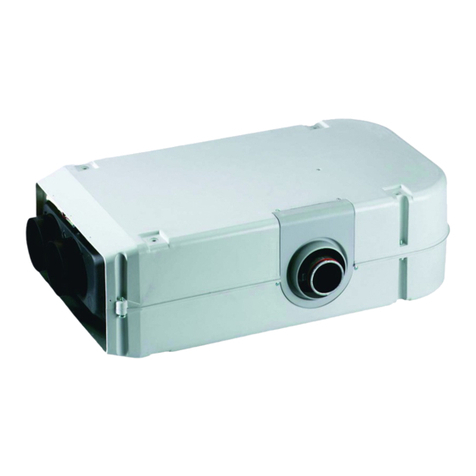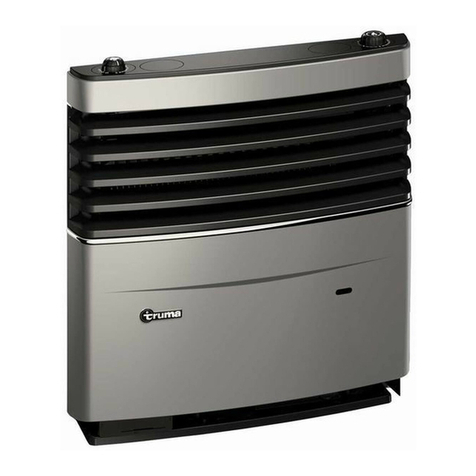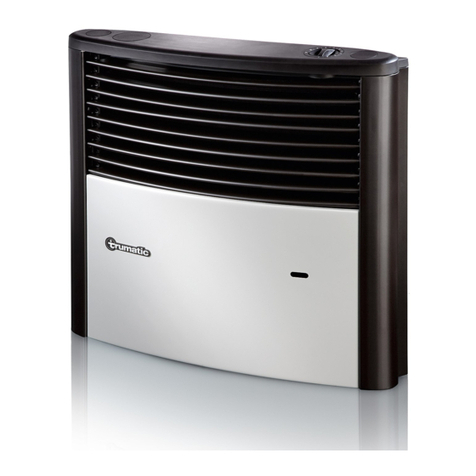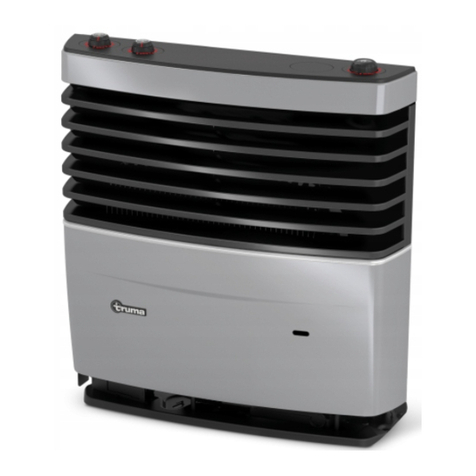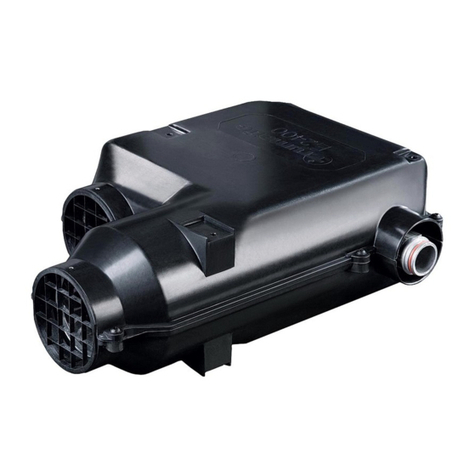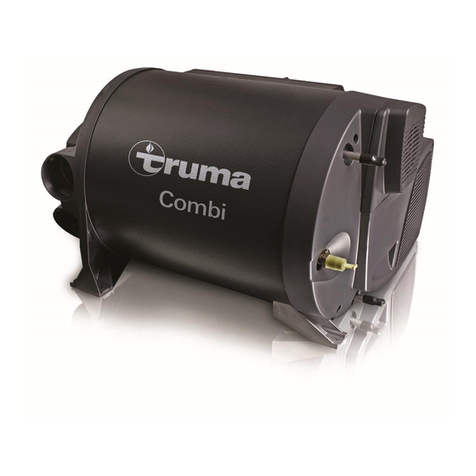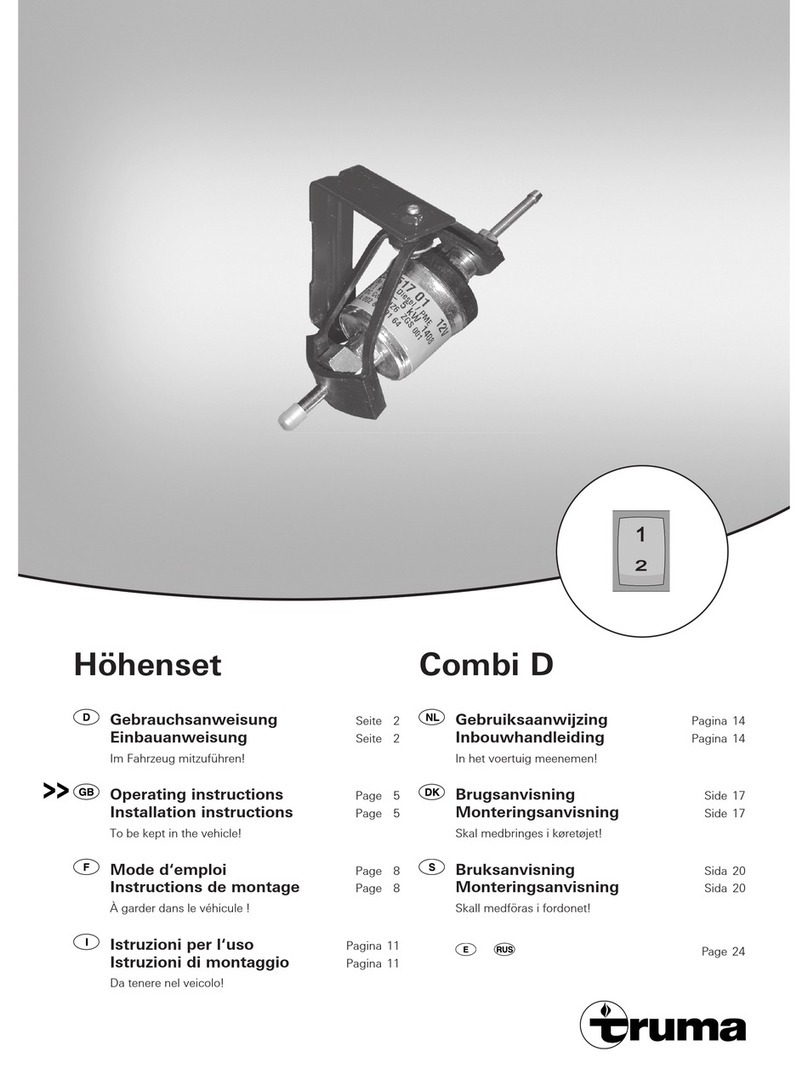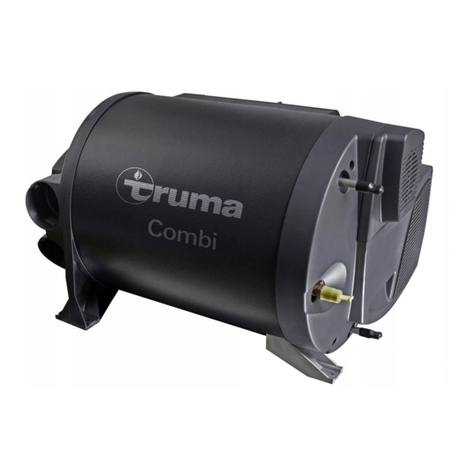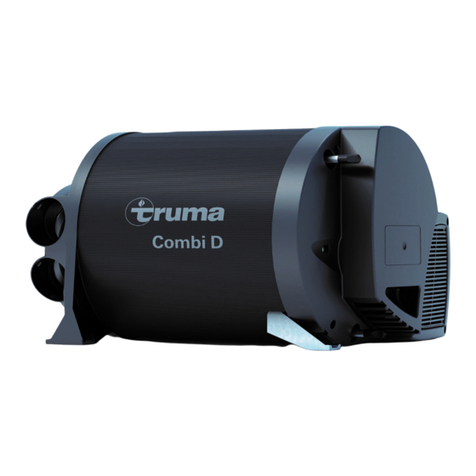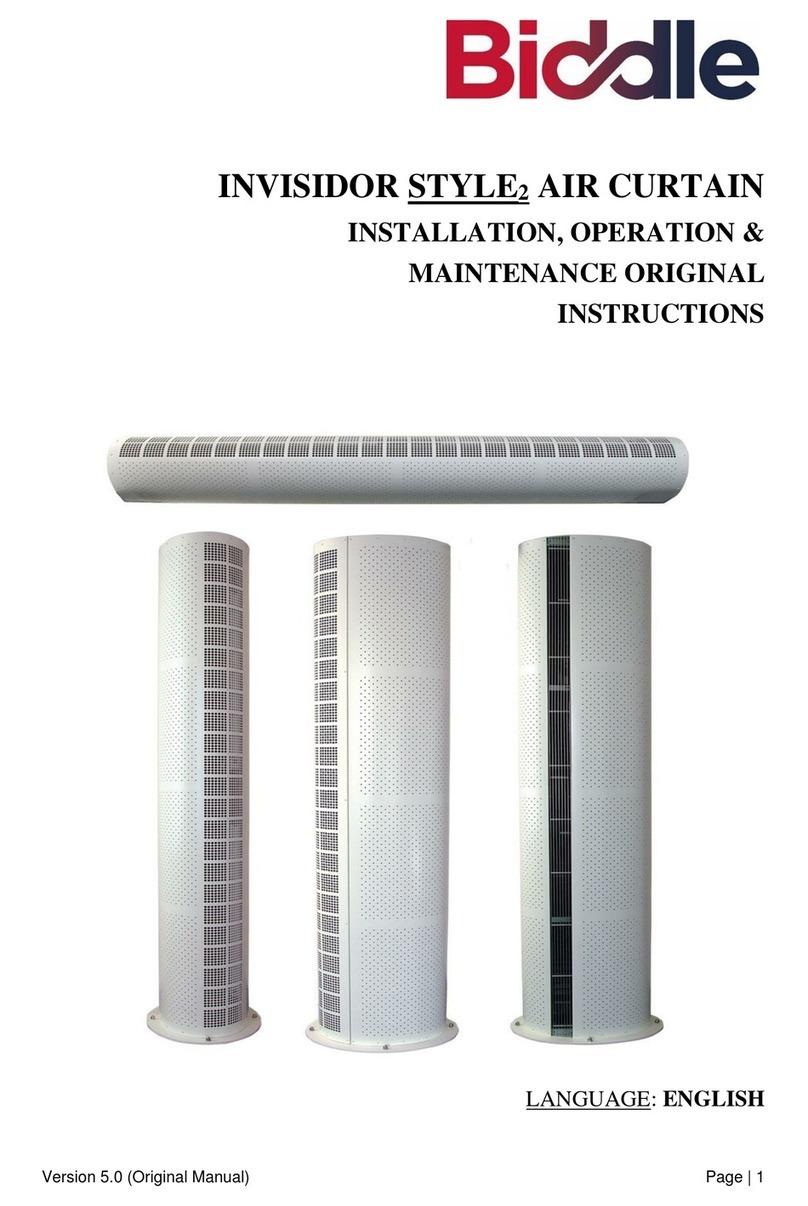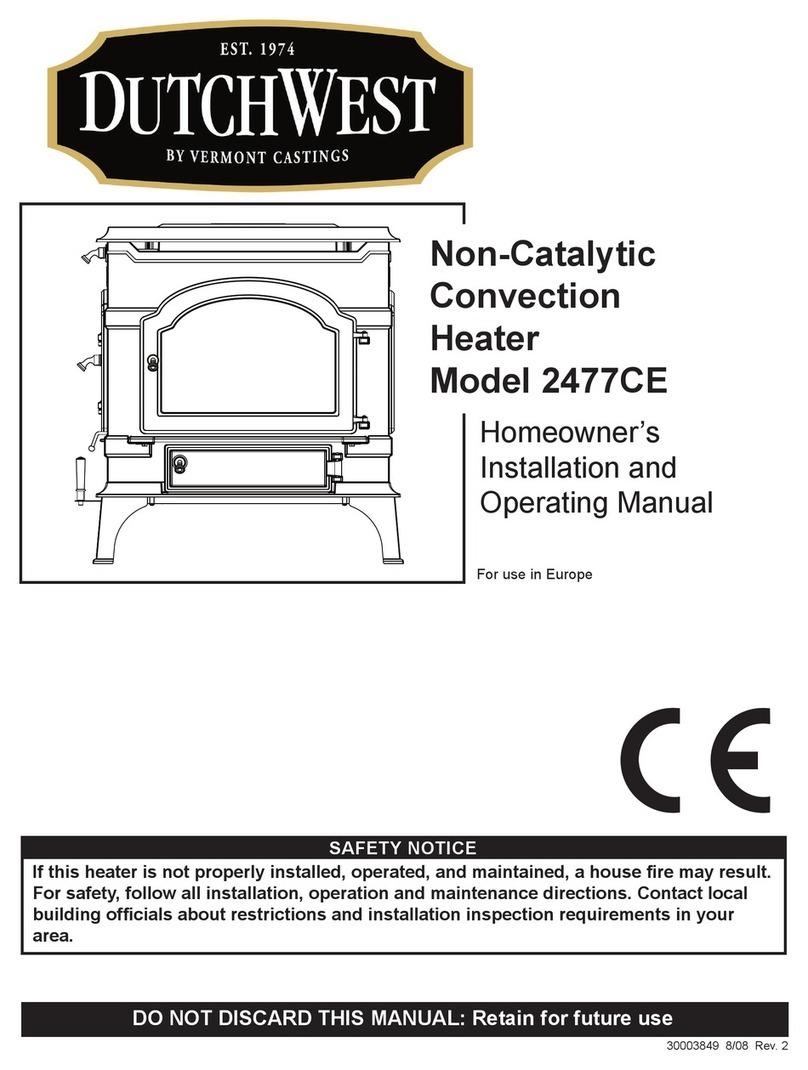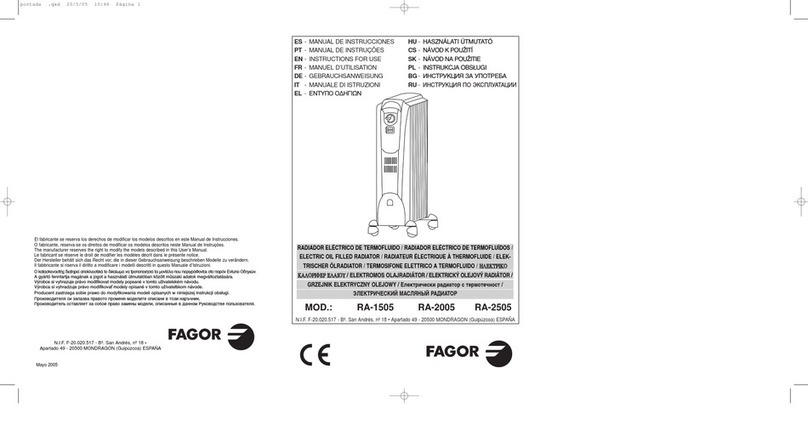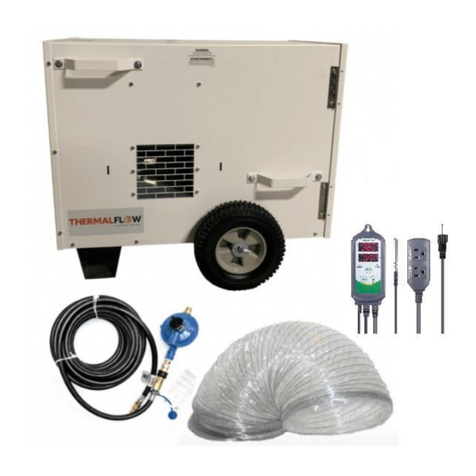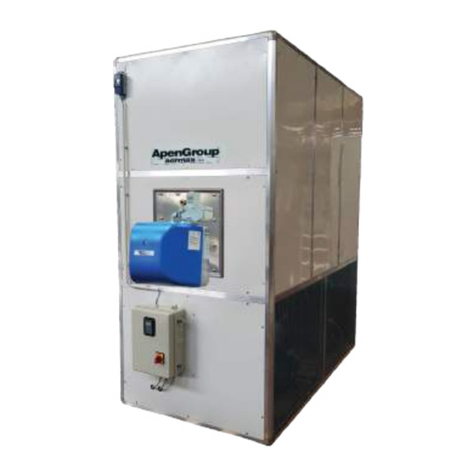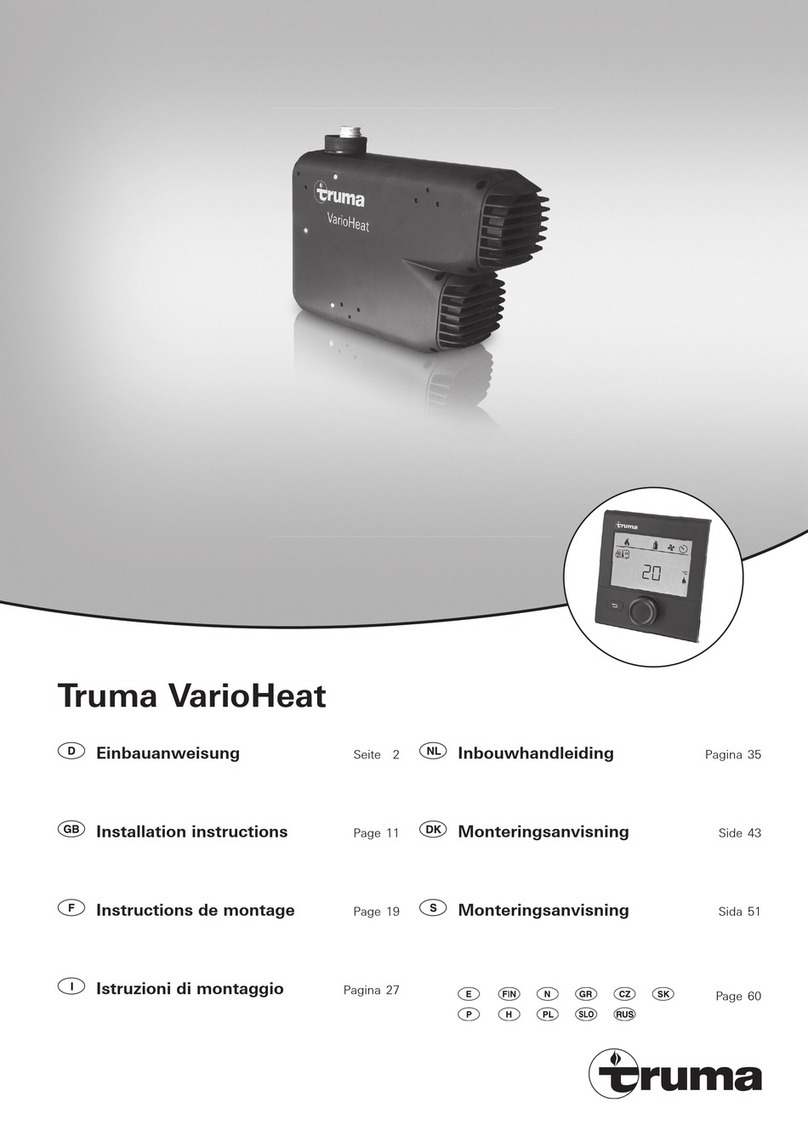
7
Cleaning the heater
– Accumulated dust on the heater pedestal must be carefully
removed with a paintbrush or a small brush at least once
annually.
Disposal
Dispose of the appliance and battery in the auto ignitor sepa-
rately in accordance with the administrative regulations of the
relevant country of use. National regulations and laws (in Ger-
many, for example, the End-of-Life Vehicle Regulation) must
be observed.
The relevant regulations must be observed in other countries.
Manufacturer’s Warranty
(European Union)
1. Scope of Manufacturer’s Warranty
As the Manufacturer of the appliance, Truma undertakes a
warranty towards the Consumer that covers any material and/
or manufacturing defects of the appliance.
This Warranty is applicable in EU member states as well as
in Iceland, Norway, Switzerland and Turkey. A Consumer is
the natural person who was the first one to purchase the
appliance from the Manufacturer, OEM or dealer and who
neither resold the appliance in a commercial or self-employed
professional capacity nor installed it for a third party in such a
capacity.
The Manufacturer’s Warranty covers any of the aforemen-
tioned defects that occur within 24 months upon concluding
the purchase agreement between the seller and the Con-
sumer. The Manufacturer or an authorised service partner
undertakes to remedy such defects through subsequent fulfil-
ment, i.e. at its discretion either by repairing or replacing the
defective item. Any defective parts shall become the property
of the Manufacturer or the authorised service partner. If the
appliance is no longer manufactured at the time of defect no-
tification and if replacement delivery has been opted for, then
the Manufacturer may deliver a similar product.
If the Manufacturer remedies a defect under its warranty
commitment, the term of the Warranty shall not start again
with regard to the repaired or replaced parts; rather, the
original warranty period shall continue to be applicable to the
appliance. Only the Manufacturer itself and an authorised
service partner shall be entitled to conduct a warranty job.
Any costs that occur in the event of a warranty claim shall be
settled directly between the authorised service partner and
the Manufacturer. The Warranty does not cover additional
costs arising from complicated removal or installation jobs on
the appliance (e.g. dismantling of furnishings or parts of the
vehicle body), and neither does it cover travel expenses in-
curred by the authorised service partner or the Manufacturer.
No further-reaching claims shall be permitted, especially dam-
age claims presented by the Consumer or third parties. This
provision shall not affect the validity of the German Product
Liability Act (Produkthaftungsgesetz).
The voluntary Manufacturer’s warranty does not affect the
Consumer’s legally valid claims for defects against the seller
in the relevant country of purchase. In individual countries
there may be warranties that can be issued by the relevant
dealer (official distributor, Truma Partner). In such cases the
warranty can be implemented directly through the dealer from
whom the Consumer bought the appliance. The warranty reg-
ulations of the country in which the appliance was purchased
by the Consumer for the first time shall also be applicable.
2. Warranty exclusions
No warranty claim shall be applicable under the following
circumstances:
– Improper, unsuitable, faulty or negligent use and any use
that is not compliant with the intended purpose
– Improper installation, assembly or commissioning, contrary
to operating or installation instructions
– Improper operation or operation contrary to operating or
installation instructions, particularly any disregard for main-
tenance, care or warning notes,
– Instances where installations, repairs or any other proce-
dures have been conducted by non-authorised parties
– Consumable materials and parts which are subject to natu-
ral wear and tear
– Installation of replacement, supplementary or accessory
parts that are not original manufacturer’s parts or which
have not been approved by the manufacturer. This applies
in particular if the appliance is subject to networked control,
if the control units or the software have not been approved
by Truma or if the Truma control unit (e.g. Truma CP plus or
Truma iNet Box) has not been exclusively used for control-
ling Truma appliances or appliances approved by Truma.
– As a consequence of damage arising from foreign sub-
stances (e.g. oil, or plasticisers in the gas), chemical or elec-
trochemical influences in the water, or cases when the ap-
pliance has come into contact with unsuitable substances
(e.g. chemical products, flammable substances or unsuit-
able cleaning agents)
– Damage caused by abnormal environmental or unsuitable
operating conditions
– Damage caused by force majeure or natural disasters or
any other influences not within Truma’s responsibility
– Damage resulting from improper transport
– End customer’s or third-party modifications of the appli-
ance, including any replacement, supplementary or acces-
sory parts, or installation of the same, especially concerning
the exhaust gas system or the cowl.
3. Making a warranty claim
The warranty must be claimed with an authorised service part-
ner or at the Truma Service Centre. All the relevant addresses
and phone numbers can be found at www.truma.com, in the
“Service” section.
The Manufacturer‘s address is:
Truma Gerätetechnik GmbH & Co. KG
Truma Servicezentrum
Wernher-von-Braun-Straße 12
85640 Putzbrunn, Germany
To ensure a smooth procedure, we would be grateful if you
could have the following details ready before contacting us:
– Detailed description of the defect
– Serial number of the appliance
– Date of purchase
The authorised service partner or the Truma Service Centre
will then specify the further procedure. To avoid transport
damage, the affected appliance must only be shipped by prior
arrangement with the authorised service partner or the Truma
Service Centre.
If the warranty claim is recognised by the Manufacturer, then
the transport expenses shall be borne by the same. If no
warranty claim is applicable, the Consumer will be notified
accordingly and any repair and transport expenses shall then
be the Consumer’s liability. We ask you not to send in an ap-
pliance without prior arrangement.
